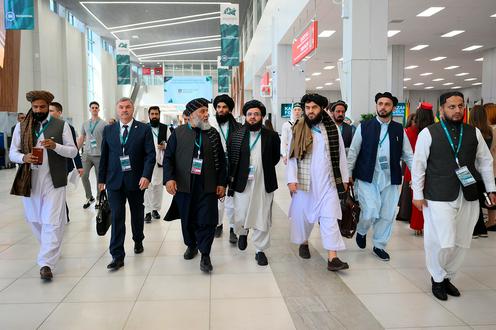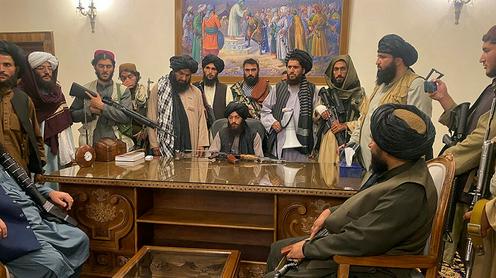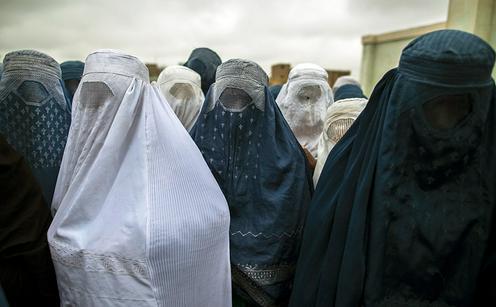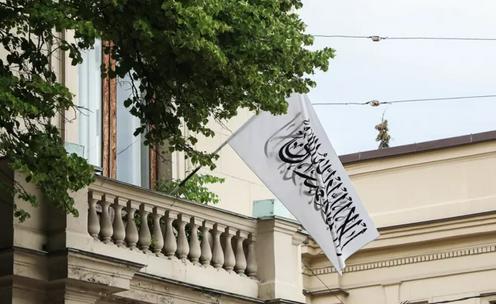On August 15, 2021, fighters of the Taliban* movement took the Afghan capital, Kabul, without resistance. From that moment, a new government was effectively established in the country.
The international community regarded the stern men with rifles with suspicion, as they immediately set a course for building an Islamic state in all its radical forms — from restricting women’s rights to banning the shaving of beards.
Nevertheless, the movement, recognized as a terrorist organization in many countries, has now ruled Afghanistan for four years and, by all appearances, has no intention of giving up its grip on power.
Back to the Past
The Taliban’s rise to power became possible after the United States lost interest in the Afghan project. In late spring 2021, the U.S. and its allies began leaving the country — in haste. Around the same time, the radicals started seizing one settlement after another with little resistance. The Afghan army often not only refused to engage in battles with the Taliban but also meekly handed over Western equipment and modern weapons to the enemy.
These events were preceded by negotiations between the Taliban and representatives of the United States. The talks took place in February 2020 in the Qatari capital, Doha. They ended with the Americans agreeing to withdraw their troops from Afghanistan in exchange for the various political forces within the country sharing power peacefully and, ideally, forming a joint government.
Commenting on the Doha Agreement five years after it was signed, one of the Taliban leaders, Anas Haqqani, called it “the defeat of the United States.”
“Our leaders did not even believe that after signing, the other side might retreat, because there were no guarantees. But we wanted to get that signature from them in front of the whole world, and in fact it was a signature of their defeat. Whatever they call it now — peace or something else,” the politician said.
He added that the Taliban had intended to enter Kabul, negotiate with the sitting government, and secure a legitimate transfer of power to the radical movement. But, according to Haqqani,
the plan was derailed when President Ashraf Ghani fled the country on August 15, 2021. With a power vacuum left behind, the Taliban had no choice but to take the reins of government into their own hands.
Former Afghan Foreign Minister Mohammad Haneef Atmar is convinced that most provisions of the Doha Agreement were ignored by both the Taliban and the Americans. In particular, he refers to combating terrorism, conducting intra-Afghan peace talks, creating a new Islamic government alongside a cease-fire. In essence, only one agreement was fulfilled — the withdrawal of foreign troops from the country.
At the same time, the diplomat does not absolve Ghani of responsibility for the radicals’ rise to power, believing that the political leaders of the time, driven by personal interests and mired in corruption, betrayed the people. Moreover, Atmar calls these very figures the main reason for the collapse of the republic, which the Taliban have since turned into an emirate entirely under their control.
Millions of Unwanted People
Incidentally, according to Ashraf Ghani’s security detail, the former president did not leave Afghanistan empty-handed — he allegedly took “hundreds of millions of dollars” in cash with him. And although the politician later denied such rumors, it is safe to assume that neither he nor his entourage were left in poverty. Ghani, for example, found refuge in the United Arab Emirates, where he remains “on humanitarian grounds.”
For ordinary Afghans, however, the Taliban’s arrival proved far more costly. Many surely still remember the harrowing images from 2021, when people desperate to flee the country clung to the landing gear of the last American aircraft disappearing over the horizon — and some fell from great heights to their deaths. Such acts of desperation made it clear that under the rule of bearded fighters, those who had supported the U.S. military or the previous government had no chance of survival.
Naturally, the consolidation of the Taliban’s power and their radical ways triggered a massive wave of refugees: millions fled abroad in fear of retribution from the militants. Over the years, the number of migrants has only grown, as life in the country has steadily worsened both economically and socially, prompting Afghans to seek a better future elsewhere. According to international organizations, since August 2021, about 600,000 Afghans have crossed into Pakistan, while roughly 1.5 million have gone to Iran.
But it is not that simple. Neighboring countries regularly carry out mass deportations of refugees. The triggers for such actions vary. In Pakistan’s case, cross-border shootings have provided an additional reason to send Afghans back. Iran, meanwhile, has often accused migrants of spying for Israel — after which “deportation” orders were issued not only to suspects and their relatives, but also to other members of their communities.
According to the UN, in recent years Iran and Pakistan together have deported more than 3 million Afghans back to their homeland. Tajikistan has also contributed to the process, hosting roughly 10,000 Afghan refugees. In July of this year, reports indicated that the country gave them 15 days to return home voluntarily. Most of these refugees are former military personnel and officials of the previous government. Upon returning, they are highly likely to face torture and execution. The exact number of individuals who received deportation notices is unknown, but the ultimatum caused widespread concern among all those who had sought refuge from the Taliban in Tajikistan.
According to the IOM, from July 17 to August 10, Tajikistan forcibly deported around 1,000 people. The Ministry of Internal Affairs explained that these individuals had “violated the law” and were therefore sent back to Afghanistan.
Afghanistan’s neighbors are not the only ones deporting refugees. In the United States, where former President Donald Trump — known for his tough stance on migration — is at the helm, the Temporary Protected Status for Afghan nationals was terminated on July 12. The White House has begun reviewing individual cases to decide which refugees may remain in the country. According to media reports, over 11,000 Afghans now face possible deportation back to the “Taliban-run” country.
It has become clear that even Europe is not the safest haven for refugees. There has already been a case of deportation carried out by Germany, a country generally considered tolerant toward foreigners. Last year, for the first time since 2021, German authorities sent Afghan nationals back home—28 “convicted criminals” underwent the procedure. This immediately sparked a debate within German society about the possibility of broader deportations, particularly targeting Afghans “prone to illegal activities.” Incidentally, each person deported received €1,000 from Berlin as a parting gesture—at least something, as they say.
What is to be done for people forcibly returned to their homeland without housing, work, or means of subsistence? The question is rhetorical. In May of this year, the UN released a report stating that the Taliban are incapable of managing the repatriation of millions of refugees. Experts warn that the returning flows will further exacerbate the already severe humanitarian crisis under Taliban rule.
Taliban-ban-ban-ban
In domestic politics, the Taliban behave as if to justify the “ban” in their name. Almost immediately after seizing power, the enforcers of Islamic norms began implementing various restrictions. Most of these targeted women, who are now forbidden from playing sports, walking in parks, or going outside without a male guardian. In Afghanistan, schools for girls over 12 were closed, universities barred female students, women were prohibited from working in government institutions, and appearing in public without a hijab became illegal. The Ministry of Women’s Affairs was abolished and replaced by the Ministry for the Promotion of Virtue and Prevention of Vice, which, notably, is responsible for formalizing these bans.
Over time, the ministry’s “appetite” has grown. Afghan women have now lost the right to speak publicly, sing, or recite the Quran aloud because, according to Taliban clerics, a woman’s voice is intimate and seductive, and outsiders do not need to hear it.
In addition, beauty salons have been banned, even though for many Afghan women, particularly in Kabul, these businesses were a vital source of income. Despite the strict rules, women continued to provide hairdressing and cosmetology services at home. However, the Ministry for the Prevention of Vice did not accept this form of private enterprise either. Raids in the capital led to the closure of underground salons. Witnesses report that, at times, officials hinted they could overlook such activities in exchange for a bribe—or even for “intimate services.” It turns out that the Taliban’s alleged principled stance against corruption, which they criticized in Ghani’s government, does not always apply in practice.
Men have not been left completely unaffected, but compared to the restrictions imposed on women, the rules for men are noticeably less severe. They are forbidden from cutting their hair in European styles, shaving, trimming their beards to less than a fist’s length, or associating with non-believers (non-Muslims).
The Taliban have also banned depictions of people. This primarily affects television channels, which will now resemble radio broadcasts, with announcers reading news and other information over images. Some ministries have found a workaround: when publishing press releases about meetings of their delegations, they post photos online and on social media showing empty rooms with flags and vacant chairs. This creates a sort of “before or after” illustration of negotiations, avoiding images taken “during” the meetings. However, local media report that authorities occasionally violate this ban—for example, to clarify social disputes, they record and release video interviews featuring the leader’s speech.
Continuing the story of the ban on images of people, a report from Daikundi province tells of Taliban enforcers targeting a foosball table—a game in which players control miniature soccer figures to score goals. The Taliban saw the figurines as “idols” and simply decapitated the plastic figures. The game itself was not banned, though the playing field likely looked rather surreal.
Chess, however, was less fortunate: the Taliban declared the ancient game “haram,” meaning effectively “forbidden,” and shut down the local chess federation.
Moscow Recognizes—Who’s Next?
Meanwhile, on the international stage, the Taliban have achieved certain successes. In April this year, Russia’s Supreme Court lifted the ban on the Taliban’s activities in the country, removing the movement from the list of terrorist organizations where it had been included back in 2003. Earlier, similar steps had been taken by other former Soviet republics—Kazakhstan and Kyrgyzstan.
In July, Russia became the first country in the world to officially recognize the Islamic Emirate of Afghanistan. The embassy building in Moscow now flies the new flag established by the Taliban, bearing the shahada (the Islamic declaration of faith in one God) on a white background. At the time, it was noted that President Vladimir Putin had made the decision at the proposal of Foreign Minister Sergey Lavrov, signaling a friendly stance toward the Afghan people.
At the same time, Kabul is seeking to establish active trade and economic cooperation with many countries, especially neighboring ones. In this context, Uzbekistan stands out, frequently sending humanitarian aid to Afghanistan and holding meetings with Taliban delegations at various levels. Recently, representatives of the radical movement were received by Uzbek President Shavkat Mirziyoyev, who appears to have been the first head of state to hold direct talks with the new authorities in Afghanistan.
Moreover, Uzbek trading houses have opened in Afghan cities, and business meetings are held regularly. In Termez, located near the border with the emirate, an international trade center has been operating since 2022. Afghan citizens can visit this facility without a visa, stay there without special permits for up to 15 days, and rent shops and other spaces.
However, there have been a few hiccups. Last year, reports emerged that the Taliban requested Uzbek officials to ban concerts and other events using music at the Termez center, since this art form is prohibited in Afghanistan. The Central Asian republic’s Ministry of Foreign Affairs soon clarified that no such request had been received from their partners. Earlier this year, it was reported that the Taliban prohibited women under 40 from visiting the international market in Uzbekistan. This restriction appears to be in effect, as merchants complained about a decrease in shoppers, noting that Afghan families, including women, used to visit in large numbers. According to traders, this latest gender-based ban led to a drop in sales.
Nevertheless, neighboring countries continue active cooperation. Kabul and Tashkent have agreed to raise their mutual trade turnover to $2 billion by the end of 2025. Additionally, Uzbekistan plays a key role in constructing the Trans-Afghan railway, which the Taliban describe as a strategically important project.
In short, more and more countries around the world, even if they do not officially recognize the emirate, are treating the Taliban as a real political force. It seems clear that this time, the bearded radicals have come to govern Afghanistan seriously and for the long term.
*The organization is recognized as a terrorist group and is banned in several countries.
-
 24 December24.12To Clean Up and to ZIYAWhat China Can Offer Central Asia in the “Green” Economy
24 December24.12To Clean Up and to ZIYAWhat China Can Offer Central Asia in the “Green” Economy -
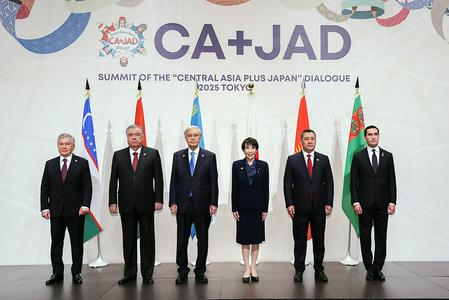 23 December23.12PhotoTokyo DriveJapan to invest about $20 billion in projects across Central Asia over five years
23 December23.12PhotoTokyo DriveJapan to invest about $20 billion in projects across Central Asia over five years -
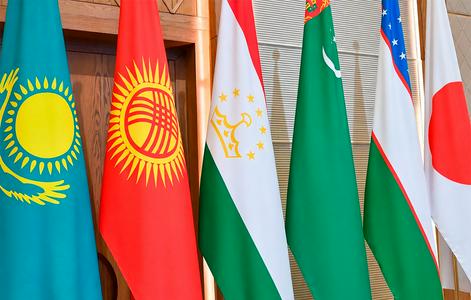 17 December17.12Sake for SixCentral Asia’s Rapprochement with Japan Comes with Hidden Pitfalls
17 December17.12Sake for SixCentral Asia’s Rapprochement with Japan Comes with Hidden Pitfalls -
 17 December17.12Gulshan Is the BestYoung Uzbek Karateka Becomes World Champion
17 December17.12Gulshan Is the BestYoung Uzbek Karateka Becomes World Champion -
 24 November24.11Here’s a New TurnRussian Scientists Revive the Plan to Irrigate Central Asia Using Siberian Rivers
24 November24.11Here’s a New TurnRussian Scientists Revive the Plan to Irrigate Central Asia Using Siberian Rivers -
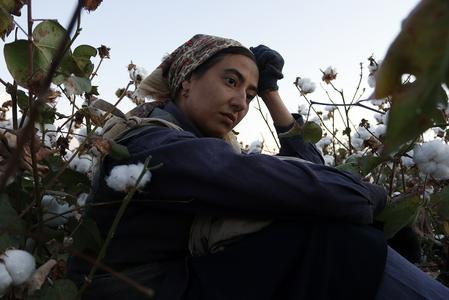 11 November11.11To Live Despite All HardshipUzbek filmmaker Rashid Malikov on his new film, a medieval threat, and the wages of filmmakers
11 November11.11To Live Despite All HardshipUzbek filmmaker Rashid Malikov on his new film, a medieval threat, and the wages of filmmakers
